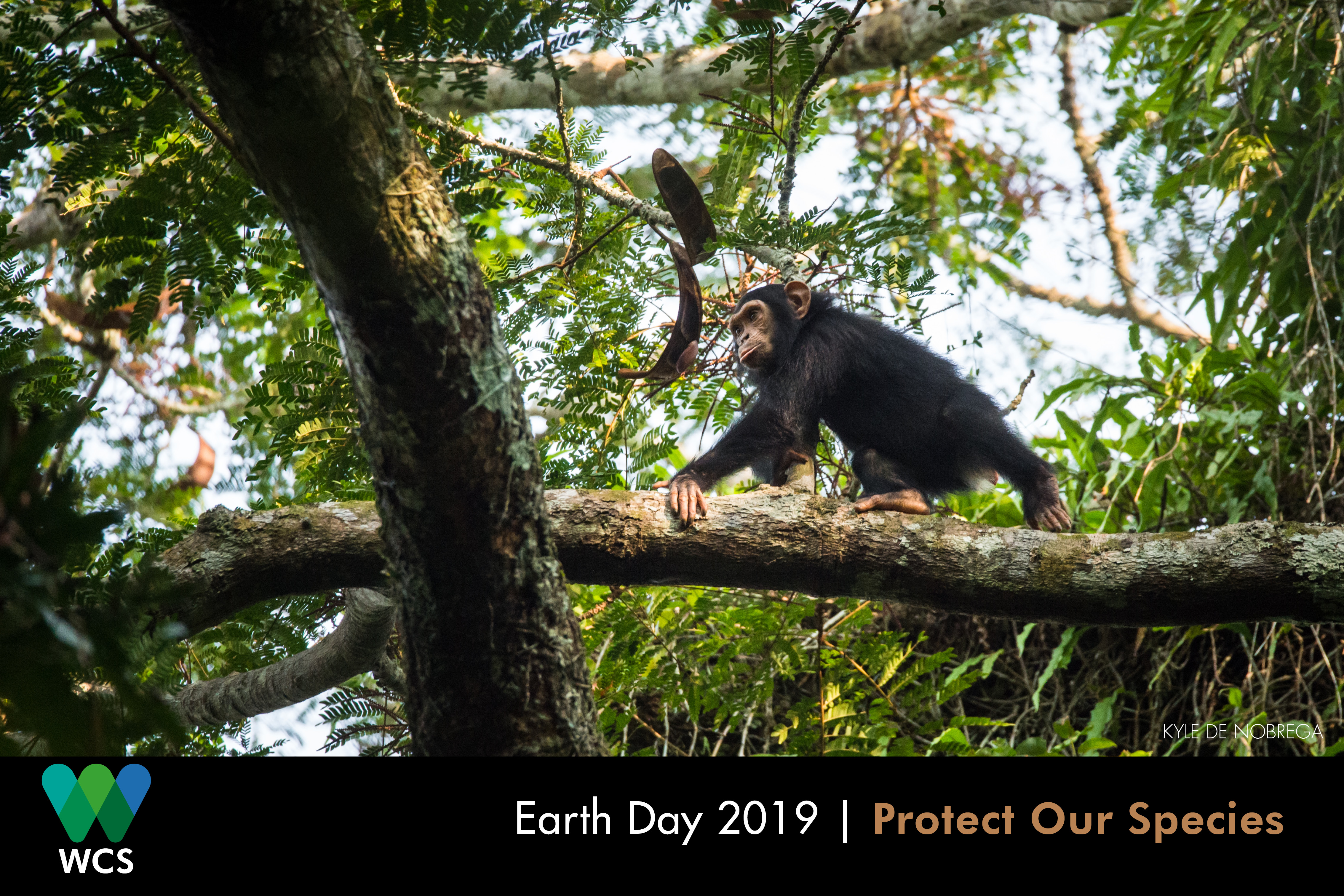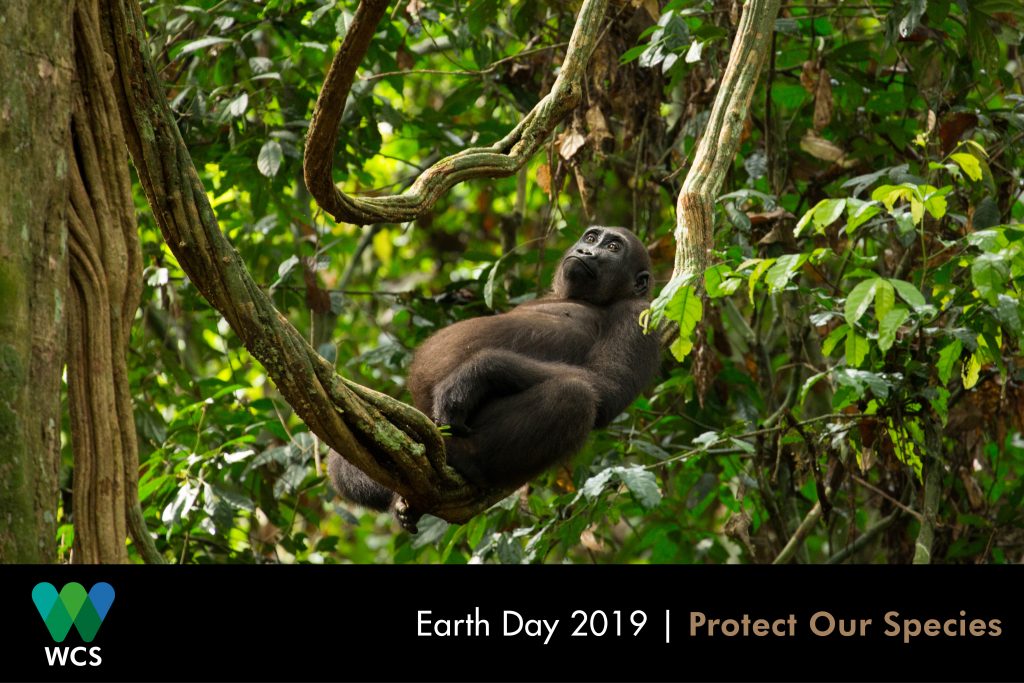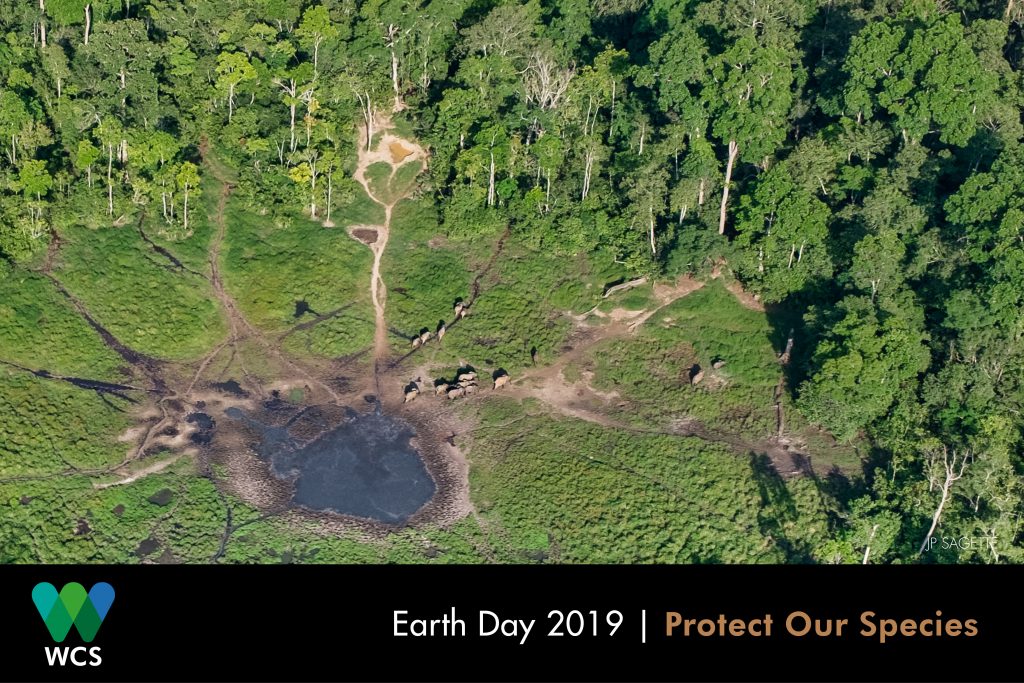
Protecting Congo’s Wildlife – Earth Day 2019
Central Africa’s rainforests are home to our closest relatives in the wild, the world’s largest land mammal and many other weird and wonderful creatures. There is so much still to be discovered about these forests and the animals that live in them, but we are destroying intact forests so fast that we risk losing them before we know what secrets they hold.
A sweeping study published in the journal Science last month says that chimpanzee’s complex cultures – including the use of tools and other behaviours – are being lost as human disturbance expands into previously wild areas. The ten-year study, led by the Max Planck Institute for Evolutionary Biology and the German Centre for Integrative Biodiversity Research, spanned 46 locations in 15 countries, including the Nouabale-Ndoki National Park in the Republic of Congo. The Nouabale-Ndoki National Park is home to over 3000 chimpanzees, and in the south of the park scientists from the Goualougo Triangle Ape Project (GTAP) have discovered some of the most diverse and complex chimpanzee tool behaviour ever documented.
The park and its periphery is also home to thousands of gorillas. A WCS-led study published last year showed that many more gorillas exist than previously thought, with 60% of the world’s remaining gorillas found in the Republic of Congo. However, an estimated 80% of these great apes are found beyond the boundaries of protected areas. In the periphery of the Nouabale-Ndoki National Park, the Wildlife Conservation Society has partnered with the Forest Stewardship Council (FSC) accredited Forestry Concession Company, Congolaise Industrielle des Bois (CIB), and the Congolese Government, to help conserve wildlife in the park periphery. This massive tract of forest acts as a buffer zone for the national park, and with no fences in the area, provides important habitat for wide ranging mega-fauna.

This Ndoki landscape is also considered to be one of the last forest elephant strongholds in Africa, with over 3000 elephants estimated to remain in the park and another 6000 in its periphery. Despite the ivory ban in China at the end of 2017, elephants are still threatened by poaching to supply the demand for ivory in the east. Protecting forest elephants is particularly challenging. Beneath the dense leafy canopy and thick understory poachers can easily conceal themselves. And despite their great size, forest elephants can also be difficult to detect and therefore difficult to protect. At the end of 2016, Cornell University’s Elephant Listening Project (ELP) and WCS-Congo launched a study using hidden microphones to monitor forest elephant populations and movements, pinpoint the gunshots of poachers, and record the biodiversity in the Park.
Any animal or human that makes a loud noise can be detected and recorded by the acoustic devices that the team sets out and monitors in the field. Elephants are exceptionally good subjects for acoustic monitoring because they communicate using low frequency rumbles which can travel long distances across the forest and can be easily picked up by the microphones. By counting vocalizations across a grid of microphones, the project aims to estimate the number of elephants and follow their movements in response to food availability, hunting pressures, and logging activity. The team of park researcher working with the Elephant Listening Project have just analysed their first set of data. The team is now working closely with the park’s anti-poaching team to share patterns they have found in the spatial and temporal distribution of gunshots in the area.

They are also discovering where the highest density of elephants is found in the landscape, information that can help ensure that these hotspots are protected. At the same time data on the amount of time it takes for elephants to come back to an area where poaching has occurred is also being collected. In the fight to protect the world’s remaining wildlife we need innovative ideas. The park’s research department is set-up to carry out applied research that feeds back into the park’s management, to ensure that the most informed decisions possible are taken.
The Nouabale-Ndoki Foundation, a partnership between the Congolese Government and the Wildlife Conservation Society, is working hard to ensure that the park and its elephants, gorillas and chimpanzees are protected. Today on Earth Day, join us and take a stand to make a difference for the future of elephants, and all the other species we share our planet with.

